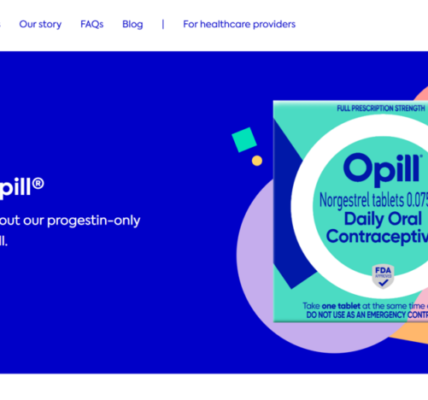CHIME23 – What’s a Problem, Technology, Opportunity, or Issue Not Enough People are Talking About?
The world of health IT is ever-changing. One moment a problem is unsolvable, the next a new technology has been created and solves the problem. One moment no one is talking about something, the next it is the hottest topic of the year. Or reversely, one moment we’re all talking about one topic, and the next we’ve left that topic in the dust as we all moved on to something new. Sometimes we even get hyper-focused on one topic, forgetting to expand our vision to the many technicalities that are needed to properly support the topic. But just like the other scenarios, that can change on the flip of a coin where all we can talk about are the fine details of a topic and forgoing the big picture. With this constant motion of change, it’s important that we take the time to stop and get our bearings, that we take notice of what we’re focusing on and what we’re ignoring.
That is exactly what we did at the recent CHIME23 Conference. While catching up with old friends and making some new ones, we decided to stop and get our bearings. We asked our wonderful friends and members of the Healthcare IT Today Community what was a problem, technology, opportunity, or issue they didn’t think enough people were talking about. The video below is a compilation of their answers.
Jennifer Johnson, Director of Healthcare Sales and Strategy at Connection – I would say staff burnout. It’s staff burnout at every level. Even the people here, I can’t tell you how many people have said how tired they are, that they’re working these 18-19 hour days doing something they love but they’re exhausted and they know that their people are exhausted and we know the clinicians are exhausted. So it isn’t just the frontline caregivers. I think there’s been a lot of attention given to the mental health of our caregivers, but not a lot to the IT staff who are working weekends, they’re working evenings, they’re missing birthday parties. That staff shortage is through the entire supply chain in the hospital for talent.
Clay Ritchey, CEO at Verato – One of the big underinvestment areas we’re seeing is really understanding that garbage in is garbage out. If you’re going to do analytics, if you’re going to do patient engagement, you have to know who the person is so you can treat the whole person, not a fragment of the person. So really investing in identity, having a comprehensive enterprise identity and a management solution and platform is one of the biggest things we see the market needing.
Kel Pults, DHA, MSN, RN-BC, Chief Clinical Officer at MediQuant – From our side, it’s a single patient identifier. That is a definite area of discussion that I think our clients right now are starting to really raise to the surface with the Cures Act and the need for interoperability. We’re going to need to have that identifier to make sure that we are sending the right data and that when our patients start accessing their own accounts, that security is there to ensure that the privacy is in place.
Robbie Hughes, CEO at Lumeon – I think an area people are missing but is coming up increasingly often is the fact you need to have a stable foundation from your operations perspective before you can start putting this stuff in on top. I think of it a little bit like a pyramid of needs, like a Maslow Hierarchy, and at the core of this pyramid, there has to be a stable understanding of your operational processes. If you don’t have something solid to build on, then adding this sort of icing on top of the cake is not going to help – it’s just going to add confusion and frankly, a lot of mystery where there shouldn’t be any.
Aditya Bansod, Co-Founder and CTO at Luma Health – We talk about consumers – patients as consumers, consumers who have a choice – but actually, I think what we see with our words and our actions are still not yet lining up as a healthcare ecosystem. So whether it’s making it easier for them to schedule online, make an inbound phone call, text their providers, all the different parts around the consumer’s experience from the moment they want care to receiving care – I think we kind of chronically paid lip service to it. We talk about how to do it but in reality, when it actually is deployed in the wild and actually operating in our health systems, the experience really isn’t there to provide a truly consumerized experience that patients expect from any service provider they engage with.
Sean Kelly, Chief Medical Officer at Imprivata – Patient misidentification – huge patient safety issue, huge revenue issue, cost avoidance liability issue, and reputational and brand issue for hospitals. People are now getting used to things like facial recognition and the market is ready for it. I think state laws are pretty difficult right now around privacy and regulation and biometrics, but technology is getting better and better. We’re getting used to it in airports and in other applications throughout our lives. I think it’s time in healthcare that we really start paying attention and invest in that.
Jeff Fuller, VP of Data Analytics at Divurgent – For me, it’s the data strategy and how you get your arms around a data strategy that’s comprehensive for solving real problems. Ownership of data that exists in the enterprise is up for debate now and it’s our responsibility, I think, to expand the ownership of that throughout the organization.
Steve Cagle, CEO at Clearwater – Cybersecurity in healthcare continues to be a huge issue that we’re talking about but I think not talking about enough. If you look at the number of breach records over the past year, we’re approaching 100 million breach records. We’re also seeing a record number of ransomware attacks that continue to plague hospitals, health systems, and digital health companies and that’s having a huge toll on healthcare from both a financial perspective and most importantly on patient safety.
Clint Drawdy, CEO at iMethods – I’m actually going to go with people, culture, and leadership. I think that’s really what’s going to help us solve all these problems. We’re all trying to figure out, how do we do the technology. I think we’ll figure the technology out, honestly, but it’s going to require really good leadership. I think as we continue to challenge ourselves from top to bottom, from the board to the last hire, focus on culture, spending more time on it, more time on people development, and trying to unlock that will then solve the tech problems.
Alok Sharma, Chief Operating Officer at 314e Corporation – Well everybody’s talking about generative AI, but I think what we need to talk about is how is that going to influence the clinicians, the physicians, the nurses, the other healthcare IT resources? How are they going to interact with that? What influence is generative AI going to have on them? How are the clinical and operational workflows going to change? How is that interaction going to happen with patients? I think we need to start thinking about some of those things as well.
Huge thank you to Jennifer Johnson, Director of Healthcare Sales and Strategy at Connection, Clay Ritchey, CEO at Verato, Kel Pults, DHA, MSN, RN-BC, Chief Clinical Officer at MediQuant, Robbie Hughes, CEO at Lumeon, Aditya Bansod, Co-Founder and CTO at Luma Health, Sean Kelly, Chief Medical Officer at Imprivata, Jeff Fuller, VP of Data Analytics at Divurgent, Steve Cagle, CEO at Clearwater, Clint Drawdy, CEO at iMethods, and Alok Sharma, Chief Operating Officer at 314e Corporation for taking the time out of their day to come and speak with us! And thank you to all of you for taking the time out of your day to read this article and watch this video! We could not do this without all of your support.
What do you think is a problem, technology, opportunity, or issue not enough people are talking about? Let us know in the comments down below or over on social media. We’d love to hear from all of you!
Get Fresh Healthcare & IT Stories Delivered Daily
Join thousands of your healthcare & HealthIT peers who subscribe to our daily newsletter.




